I now own six typewriters. This number may increase before this newsletter is through - that’s the way things are going right now.
I got stuck.
The last comic series I wrote was five years ago. That’s a long time for someone who supposedly makes a living out of writing comics. Between my last book (‘King Tank Girl) and now, lock-down happened, Dad died, Mum’s health declined, other family matters clouded the horizon, and I ended up in a spiral of never-ending survival-mode/slight-recovery/more survival-mode. During that period I battered and deep fried my nervous system, like some kind of sensory Mars Bar, and the result was a disgusting, crispy/gooey mess that totally immobilised me. I ended up more blocked than I’ve ever been before (hence no updates here for several months), so I set in motion my usual home-made, self-help formula of getting some words out, getting past the blockade, Dambusting. None of my go-tos worked: watching war movies at 5am; micro-dosing Liberty Caps; going to the gym; not going to the gym; walking; not walking; trying to knock a few hundredths of a second off my fastest lap on Scalextric… nothing. I was in a total, ragged, empty-tank funk.
Then one day, with an idea that I would start some sort of Journaling activity, I got my typewriter out. It was a beautiful machine, an immaculate 1970 Olympia Traveller De Luxe in orange with white trim, Lou bought it for me for Christmas about ten years ago. I’d messed about with it, started bits of script, used it to create some vintage-looking block type for zine material, but I’d never fully invested in it.
Journaling had always been a problem for me. I couldn’t understand how someone could write down their innermost thoughts, and then leave them lying around for anyone to pick up and read; how could you be truly honest with that hung up in the back of your mind? So I came up with the idea of the “Burnal” - as a soon as I had finished writing, I would take the pages to the log burner and incinerate the fuckers. That way (unless I happened to drop dead on my way to the fireplace) no one would ever get to see what I had written, and I could delve as deeply as I wanted into my most unthinkable thoughts. I didn’t want to write for review, I didn’t want to revisit what I had vomited onto the page, it wasn’t supposed to be a diary, and it wasn’t for anyone else.
This message will self-destruct in five seconds.
My new model of journaling/burnaling worked well for me, and I found that if I stated a problem or asked a specific question at the top of an A4 sheet, I had usually written the answer by the time I’d reached the bottom of the page.
Take what you need from the page, then burn.
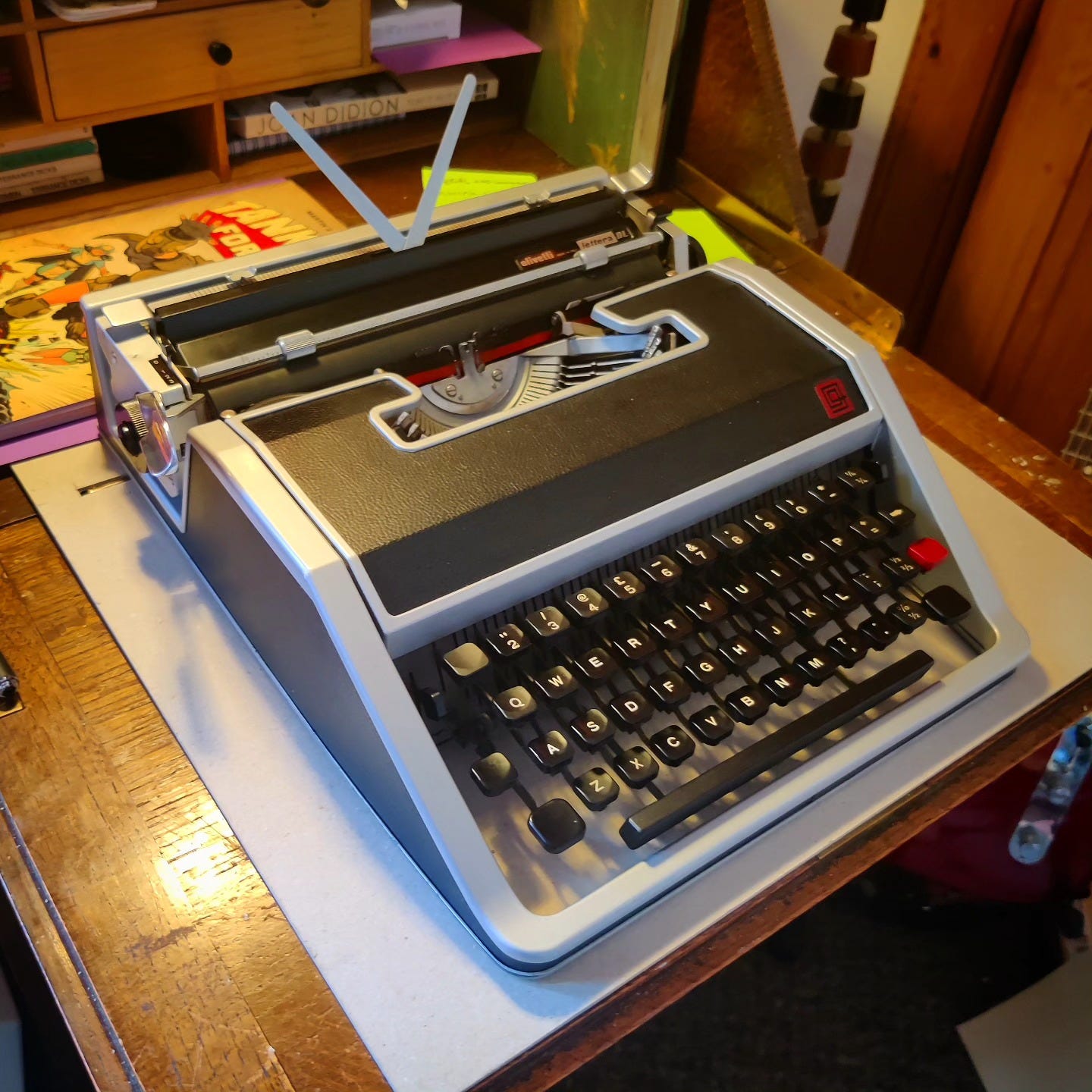
Over the years I’ve tinkered with many different writing implements - word processors, laptops, desktops, the internet-free Freewrite and Neo AlphaSmart - but every single one of those machines was digital. For some reason I thought that typewriters belonged to the same family as those beasts, but I was wrong.
I started to research typewriters online, and I found a whole community of typewriter freaks, extolling the virtues of classic machines and doing in-depth studies of their favourite models. Coming from a design background, I appreciated the beautiful form of a lot of those models (especially the mid-century designs) and could see that the competition in those years had driven companies to produce the most excellent machines they could muster.
I couldn’t resist. I bought myself a second typewriter.
This isn’t an expensive hobby, collecting typewriters; most of what I’ve bought has cost me £50 or less. I’m quite handy at fixing things, and have been taking mechanical and electrical things to pieces since I was old enough to hold a screwdriver, so when my new machine turned up, and was found to be in less than serviceable condition, I striped it down and learned how to service a typewriter. With its guts hanging out, I found out what it was that resonated so strongly between me and typewriters - the linkages that connect the keys to the letter hammers look like tiny finger-bones and knuckles, and the “basket” (the semi-circle of letter hammers that faces the paper) was like a cupped, many-fingered hand.
The typewriter is a skeletal extension of my fingers.
One of the joys of using the Olympia Traveller is the power you can put into a keystroke, you can really whack those bastards, and they’ll take it. The feeling is like you are tapping the letters directly onto the paper with the tips of your fingers.
Alan Moore once said that the ideal writer would have their brain in the back of their hand, so that there would be no delay - the gap between thought and paper would be as minimal as possible. Writing software throws up a blizzard of distraction, confusion, second-guesses, and formatting cul-de-sacs. I don’t want or need that shit when I’m struggling to spew forth my ideas, it’s hard enough to stay on target as it is, without Word suggesting that I could make a better job of constructing that sentence, or telling me that they spell “colour” differently in USA.
Digital always gives us an interface, and that removes us from connection.
This is the method I developed, the Dambuster. I’m not saying it will work for everyone, or for any writers’ block or other creative cloggage, but it might be worth a try if you’re struggling.
Get yourself a nice, serviceable, second-hand typewriter (if it looks good too, all the better) (and don’t buy a modern new one, they are all shit).
Learn how to use it. Get yourself some nice paper, dig some colours and textures.
Write “Burnal” pages every day. Ask a question, then write down what you know.
Burn the evidence, save what you need from the bottom of the page.
Start asking the typewriter questions about your work. You can keep these pages.
Work.
I am now writing the next Tank Girl series (important news about that in the next newsletter!).
I asked what Tank Girl was up to now. I asked the same question for the other characters. I asked what had happened to the all of the characters in the last five years. I asked what I want to express, what crazy shit am I currently into, what I wanted to learn about.
And the answers came, at the bottom of the page.
Whilst I’ve been hiding, we issued the Twentieth Edition of the large-format Tank Girl Poster Magazine. It’s a lovely fold-out poster of Brett Parson’s art from TG All Stars, with a print, a postcard, a trade card, and an exclusive Lime Green version of our ever popular Tea Making Division patch. There’s still a few left in THE OFFICIAL TANK GIRL STORE so grab yours today!
Yours,
hopefully more frequently,
Alan
XXX


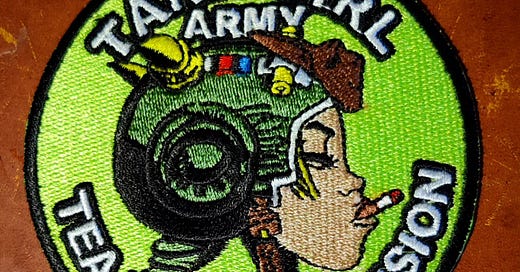



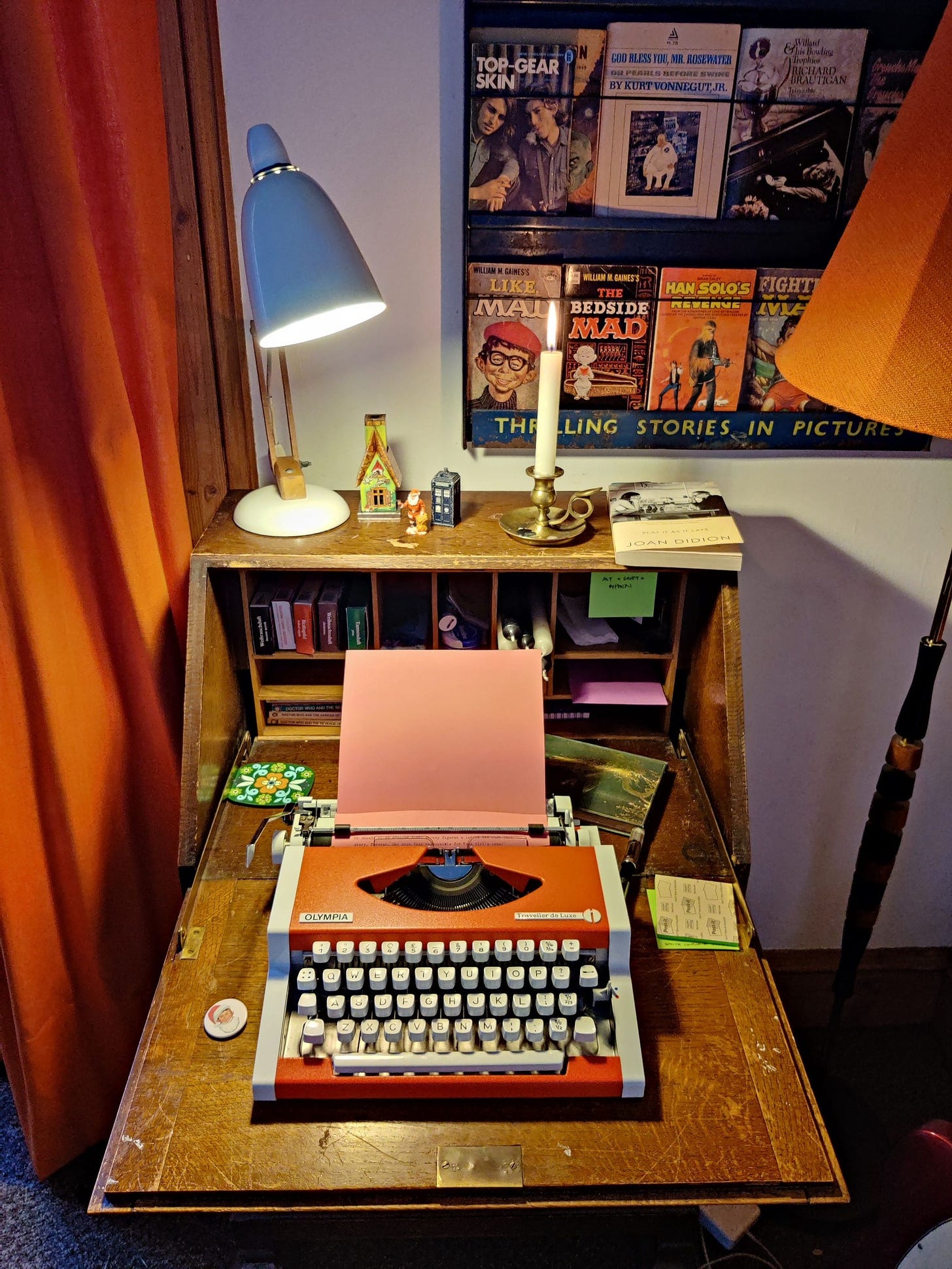
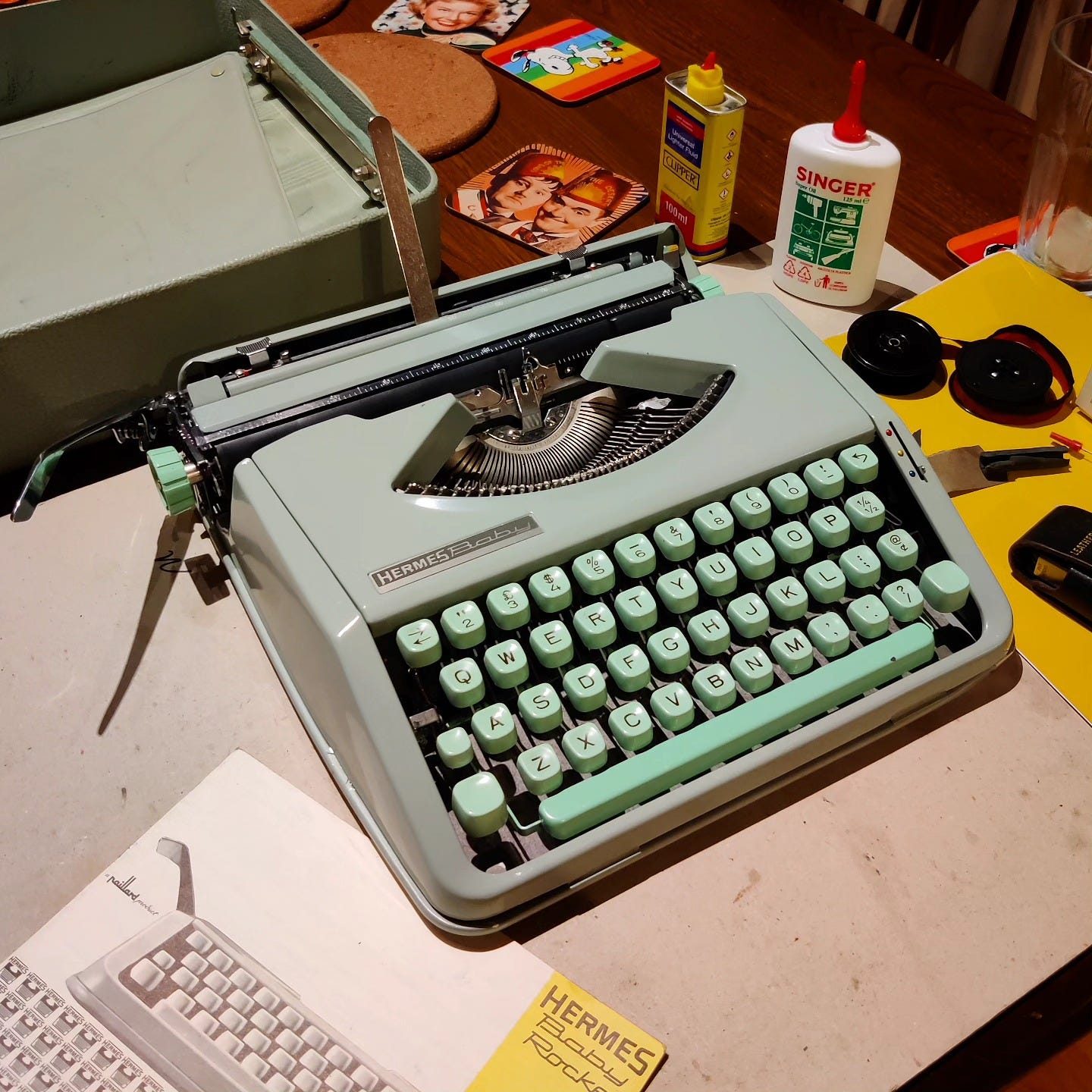
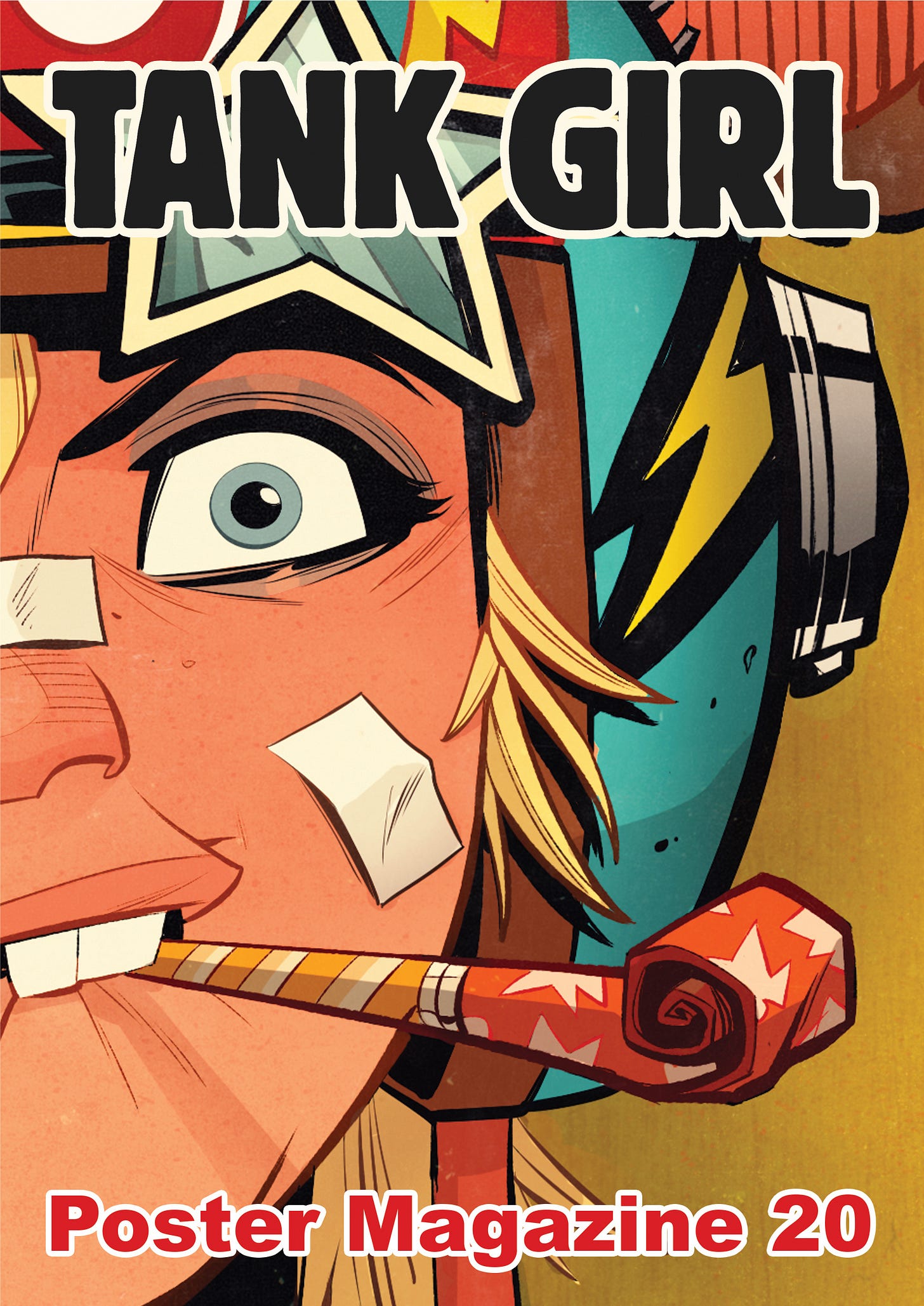
Love this!! What a fantastic way to clear your mind. Glad to see you are back in action. I can’t wait to see what nonsense you have cooking up for TG and the gang 🖤
Welcome back Alan!! I have to say those are not only gorgeous typewriters but the environment you have to write in looks cosy! 🤟💚